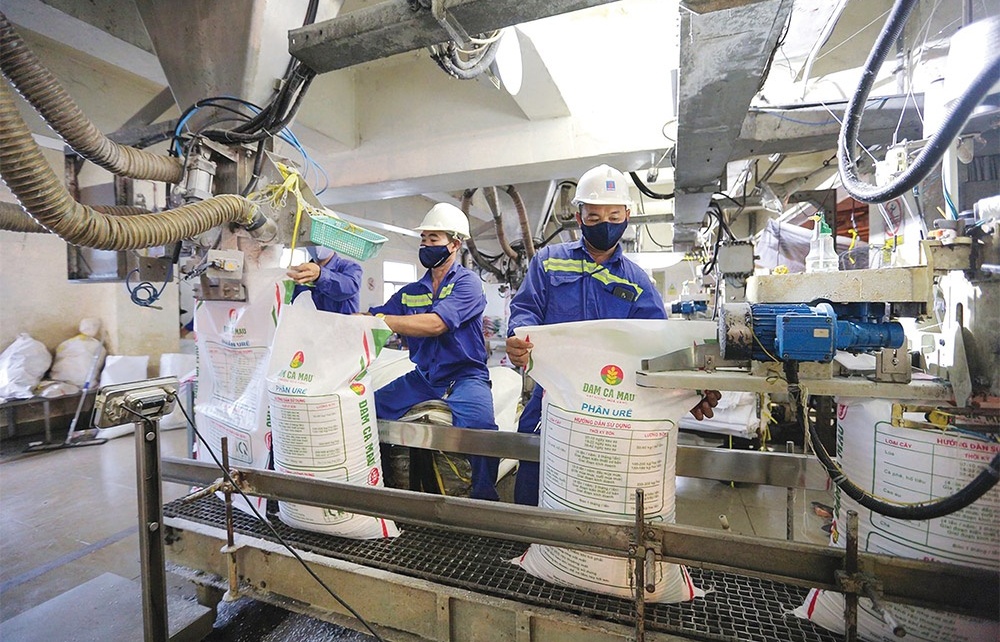Dark and white knights fight over prized assets
 However, we found a much more interesting figure in this report, which was the estimation of collateral banking up the VND202 trillion ($9.7 billion) of bad debt was valued at 134.8 per cent of the loan value. This is very different from the subprime crisis that vandalised the US economy five years ago when mortgage values fell much below loan values.
However, we found a much more interesting figure in this report, which was the estimation of collateral banking up the VND202 trillion ($9.7 billion) of bad debt was valued at 134.8 per cent of the loan value. This is very different from the subprime crisis that vandalised the US economy five years ago when mortgage values fell much below loan values.
However, Vietnamese banks remained extremely conservative about forcing the borrowers of non-performing loans (NPL) to bankruptcy and/or liquidating the collateral assets. The explanation was due to the complicated and prolonged litigation procedures involved, sometimes taking up to three years to finalise.
While it was clear that resolving bad debts must involve collateral asset liquidation, the question was how and who will buy?
Who will buy bad debts?
“The White Knight” was one of the most common types of bad debt buyers, those who believed there is a chance to improve the performance of the debtor and thus, relieve the company from distressed condition. The nature of bad debts were caused by different types of business, in different industries and located in different geographical areas. In order to generate turn-around a distressed company, “The White Knight” must possess the right experience, skill sets, capital and intellectual capabilities. “The White Knight” often targets upstream or downstream integration with distressed debtor to generate synergies. The ideal scenario was found when a manufacturing company purchases the packaging contractor, or a retailer purchases one of its suppliers. “The White Knight” usually aims at win-win bargaining while it can generate profit from the transaction, the bank can be released from the bad debt, the debtor and its employees are given the chance to get back to business.
“The Dark Knight”, on the other hand, is opportunistic investor who is not interested in the survival of the debtor, but its assets only. “The Dark Knight” would acquire the distressed company at deep discount then find ways to divide the target into pieces, liquidating its assets at premium to loan value to generate profit.
Even companies with net asset value of zero could be purchased at a premium since ‘The Dark Knight” could realise tax savings from a loss-making company by transferring some of its operation into the new “shell”.
Bad debt buyers could be “The White Knight” or ‘The Dark Knight”, or share the natures of both these. However, at the end of the day, the bank will welcome these investors since helping remove the bad debt from its balance sheet.
And another perspective on AMC
Until now it has been formidable for “The White Knights” and “The Dark Knights” to overcome the transparency walls of local banks to access their bad debt portfolio. The governing bodies of banking system including State Bank and Ministry of Finance, although realised the enormous risk of bad debt, did or could not impose any real pressure on credit institutions to make their bad debt condition transparent.
One of the solutions is the establishment of National Asset Management Company (AMC).
However, the matters related to sources of funding as well as roles and responsibilities of AMC became major topics of debates. Parliament remained unsupportive about using National Treasury funds to “invest” in banks’ bad debts, despite the commitment of AMC initiator about the profit driven nature of it.
Without questioning about the risk and minority interests issues, the fact that AMC could become the monopoly in bad debt trading would definitely create unexpected market inefficiency and transparency problems. It does not matter whether bad debts were resold by direct transfer or securitisation by AMC, after the transaction, bad debts would remain as bad debts. Under such operation model, AMC bears a tremendous amount of financial risk and it only added to the “cost” factor of bad debt without any value.
From our perspective, the establishment of AMC is still very critical at this stage, because without the legal and political empowerment from government bodies, no existing entities in the economy would be able to force banks to open access to bad debt trading. AMC, however, should remain as the primary market maker, or “broker” to facilitate a transparent and efficient bad debt trading market.
AMC would not have to raise enormous amount of funds to collect all bad debts and it could generate “brokerage fee” from any concluded transaction at significantly lower risk level.
Bad debt liquidation process could be slower. However, this would be the treatment for the root cause when bad debts could find buyers with real demand.
What the stars mean:
★ Poor ★ ★ Promising ★★★ Good ★★★★ Very good ★★★★★ Exceptional
Related Contents
Latest News
More News
- HoSE to launch KRX trading system on May 2 (April 23, 2024 | 12:16)
- Refinements necessary for stock market (April 23, 2024 | 11:00)
- Solutions for enhancing provision of the stock market (April 23, 2024 | 10:38)
- MB aiming for 30 million customers by end of year (April 22, 2024 | 17:43)
- MB finalises strategy for acquisition of distressed bank (April 22, 2024 | 16:33)
- Vietnam central bank postpones gold bar auction (April 22, 2024 | 15:27)
- Benefits of pension funds must be incentivised (April 22, 2024 | 15:00)
- KRX trading system to begin official operation (April 22, 2024 | 14:09)
- Voluntary pensions to rejuvenate the sector (April 22, 2024 | 14:00)
- Gold market reforms paramount to stability (April 22, 2024 | 10:18)



 Tag:
Tag:


















 Mobile Version
Mobile Version